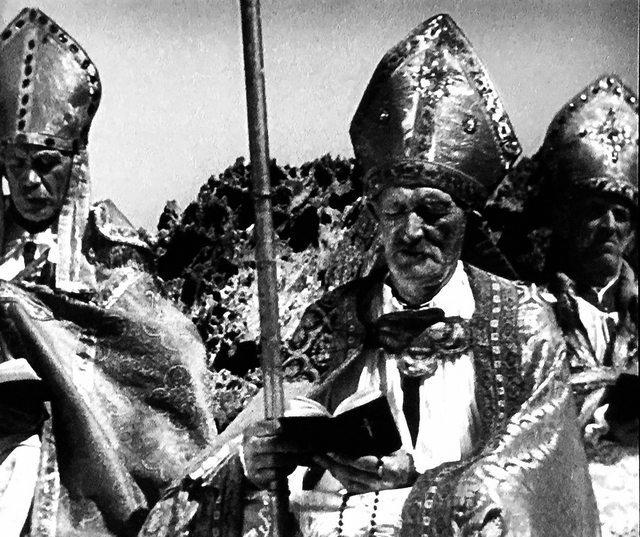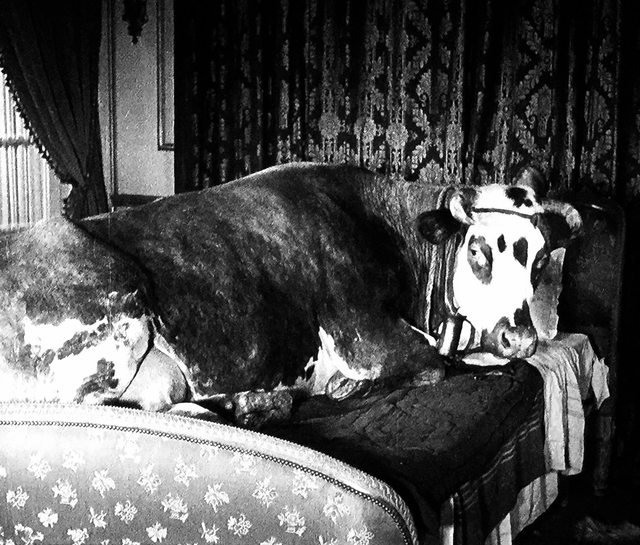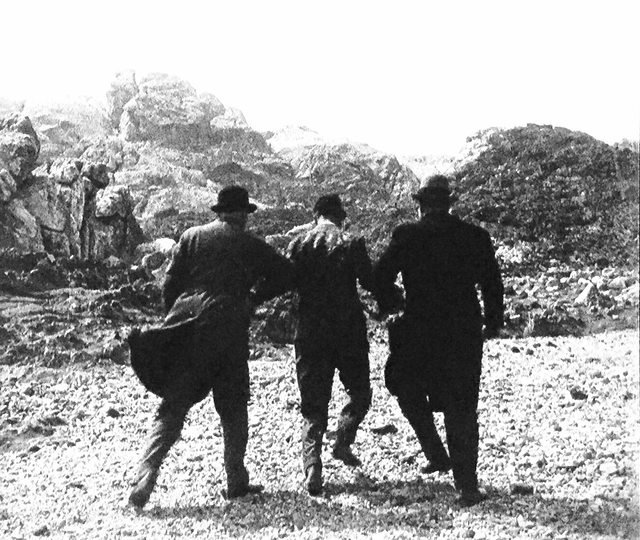THE GOLDEN AGE (aka AGE OF GOLD) [Luis Buñuel & Salvador Dali, 1930] - film review by Mandibil
The relative success gained by "An Andalusian Dog" in 1929, prompted another surrealist project by these two giants of surrealism. Dali supplying ideas and Bunuel directing. But this production was not big enough for both of the artists and they fell out before production. Dali later dismissed it, since he felt his contributions and ideas were neglected. My guess is, it did not turn out surrealistic enough for Dali´s taste and possibly the direct reference to other artists within the film, did not please him. It was privately financed by a certain Vicomte Charles de Noailles, a nobleman, who had the habit of producing a film each year for his wife.

Describing the plot and story in a film like this is a daunting task for obvious reasons. But at least there are more structure and thematic indications, than in the previous film. It starts of with stock film of Scorpions and a clever analyst has pointed out, that the film is divided into six parts, just like the tail of the scorpion. And the final sixth part has the sting. Important points to take into consideration then also is,that the scorpion can wiggle off some of the parts of the tail if grabbed and secondly and its anus is placed on the fifth part, just before the one with the sting. Now it is unknown to what degree the two gentlemen had knowledge of scorpion morphology and also to what extend it was used in the framework of this film. I just put it out as a teaser for doing some potential analysis yourself. As with all surrealism, concepts are distorted, exchanged, added or removed in the narrative, so basically anything goes for guessing.

This is my interpretation. The theme is sexuality vs. societal norms, which is in many ways identical to An Andalusian Dog. This recurring theme i would argue stems from the result of Buñuel´s religious upbringing. The length of the movie and its more focused narrative, makes it clearer to me, that that is actually the theme. We see the couple rolling in the mud trying to have sex, but they are attacked by the surrounding society, and the man is beaten and arrested. He is then dragged off through the landscape and the city by two men. After having served some time, he is released and looks up the family of the woman. She is high society, surrounded by dysfunctional people, who guards her sexuality. After several tries, and slapping her mother, he finally gets to have sex with her in the garden. They do a "69" sucking on each others genitals, shown by them simultaneously sucking each others fingers. But he finds out that she has probably been abused by her religious family and the man disappears out of the story. The abuse is shown by her toe-jobbing a religious statue and tongue kissing the "culture" represented by the conductor. The final sting of the sixth part is a reference to Marquis de Sade´s pedophilia abuse of young girls within the christian society, represented by the Jesus lookalike. Young girls are destroyed sexually by the abuse of religious indoctrination and punishment and being sexually abused by the hypocrites who controls them in the first place. This is shown by the cross ornamented with six female scalps. "The golden age", which is a metaphor for a time of purity and moral high standards, may be a sarcastic sting in the face of contemporary society, which is corrupted and hypocritical.

Usually i try not to compare films, but in this case we are dealing with one out of two of the most revered surrealist films of all time. It is hard not to compare them and maybe even see them as connected. At least, to me, the theme of sexuality versus society is everywhere in both films. From an artistic point of view, this one is less surrealistic, and it takes away much of the unique charm the first one had. The theme is actually too clear and i suppose this can be an illustration of the difficulties of making surrealist art. It must have some kind of connection to reality, but not too much so, that it looses its surrealist charm and you start to wish for a "normal" narrative that is fleshed out if it is presented too clearly. The theme has been used in the first movie already and it gets a bit tiresome to see the same point being made over and over again. But i am very much fond of this type of movie in general and it is hard not to like it anyway. I have always been a big fan of surrealism and the general reaction against cultural restraints in the 1920´s (and a bit into the 30´s). I can recommend this just as easily as the first one, except the first one is still my favorite.

Rating: 8/10